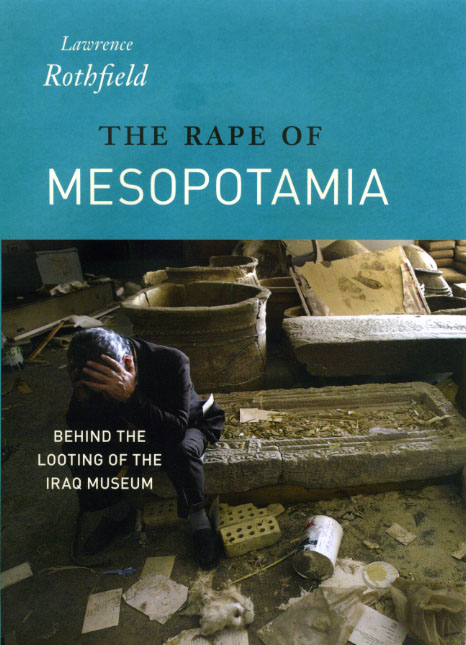A conversation about the looting of Iraq’s cultural heritage

In April of 2003, in the wake of a violent counter-insurgency, thousands of priceless relics from ancient Mesopotamian civilization were stolen from Iraq’s National Museum in Baghdad. Despite the presence of an American tank unit, the pillaging went unchecked, and more than 15,000 artifacts—some of the oldest evidence of human culture—disappeared into the shadowy worldwide market in illicit antiquities. Since then, the looting and vandalism of the world’s cultural heritage in Iraq saw an increase as gangs continued to loot artifacts that had previously been unexcavated, and though on February 23, 2009 the museum was reopened by Iraqi prime minister Nouri al-Maliki, many of its artifacts have yet to be restored. Recently Lawrence Rothfield, author of The Rape of Mesopotamia: Behind the Looting of the Iraq Museum, joined the Chronicle of Higher Education‘s David Glenn to discuss the reasons for the failure to protect Iraq’s cultural heritage and what might be done to prevent it in the future. From the Chronicle:
Q. Why did the United States do such a bad job of protecting the museum in 2003?
Before the war, nobody except archaeologists was worried about civilians looting the archaeological sites and the museum. And that includes the Iraqi exiles who were advising the State Department’s Future of Iraq Project, which was supposed to develop plans for the postwar period. They set up working groups on all sectors of society — but they forgot about culture.
Q. But would it have made a difference if the Future of Iraq Project had paid attention to culture?
No, it wouldn’t have made any difference at all, given that the military threw all of their plans in the garbage can anyway.
Now, the military itself was very interested in doing its job in terms of protecting cultural sites and museums. But under international law, its job is defined as not destroying or looting cultural sites itself — not as preventing civilians from destroying sites.
So before the war, they reached out to archaeologists, and they did a perfect job of identifying sites to put on a no-strike list. None of those sites was destroyed in active combat operations.
Unfortunately, they ignored warnings from the same archaeologists they were working with that the museums and sites might be looted by Iraqis. The Pentagon should have known about that issue. Nine museums were looted after the 1991 Gulf War. The military did not learn its lesson from that experience.
Read the rest of the interview on the Chronicle website or on the author’s blog, The Punching Bag. Also read an excerpt from the book.